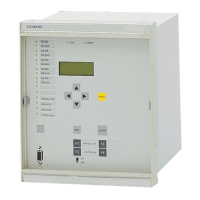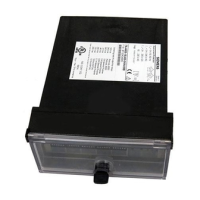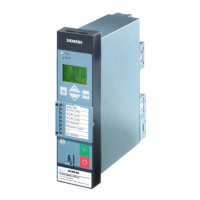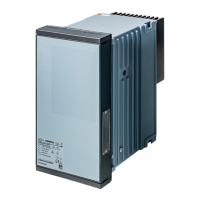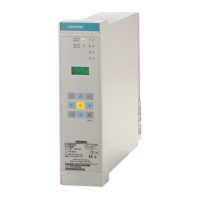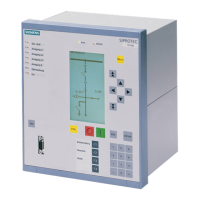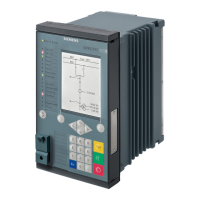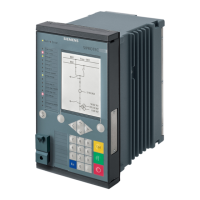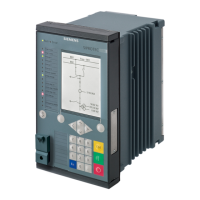Functions
134
7SS52 V4 Manual
C53000-G1176-C182-1
5.4.2 Protection in the ”Dead Zone” of the Bus Coupler
In the SIPROTEC 7SS52 V4 distributed busbar and breaker failure protection one bus
coupler can be assigned either one (1-bay coupler) or two (2-bay coupler) bay units.
This is mainly determined by the number of current transformers contained in the cou-
pler, although in special cases bus couplers with only one current transformer can be
allocated two bay units as well, e.g. if the bus coupler comprises more than 5 isolators.
In that case the current is fed to both bay units.
The treatment of the dead zone of the bus coupler, however, is the same in both ver-
sions.
Figure 5-30 Allocation of the bus coupler currents with only one bus coupler current transform-
er
When considering a short-circuit in the ”dead zone” of the bus coupler, a distinction
must be made between cases with closed circuit breaker and cases with open circuit
breaker.
5.4.2.1 Circuit Breaker Closed
In the event of a short-circuit in the dead zone of the bus coupler with the circuit break-
er closed, bus zone BZ A is tripped because I
1
and I
CP
flow towards busbar A. Bus
zone BZ B remains in operation, which means that the fault continues to be fed (Figure
5-31, page 135 "(1)"). In order to interrupt the short-circuit current, the second bus
zone must be isolated, too. For this purpose, the bay unit monitors the current in the
bus coupler after BZ A has been tripped. If the current in the bus coupler persists after
the time delay of the breaker failure protection set with the parameter T-BF-1P
(XX20/CU) or T-BF-mP (XX21/CU) has elapsed, the current I
CP
for the measuring
system BZ A and for the currently stabilized measuring system BZ B is set to zero (Fig-
ure 5-31, page 135 "(2)"). This results in an unbalancing of the measuring system BZ
B, which issues a TRIP command to all affected circuit breakers. By connecting in ad-
dition the auxiliary contact "CB Open" of the coupler circuit breaker, the second busbar
can be tripped even before the breaker failure protection time T-BF has elapsed
(Chapter 5.4.2.2, page 135).
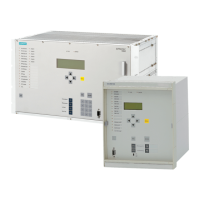
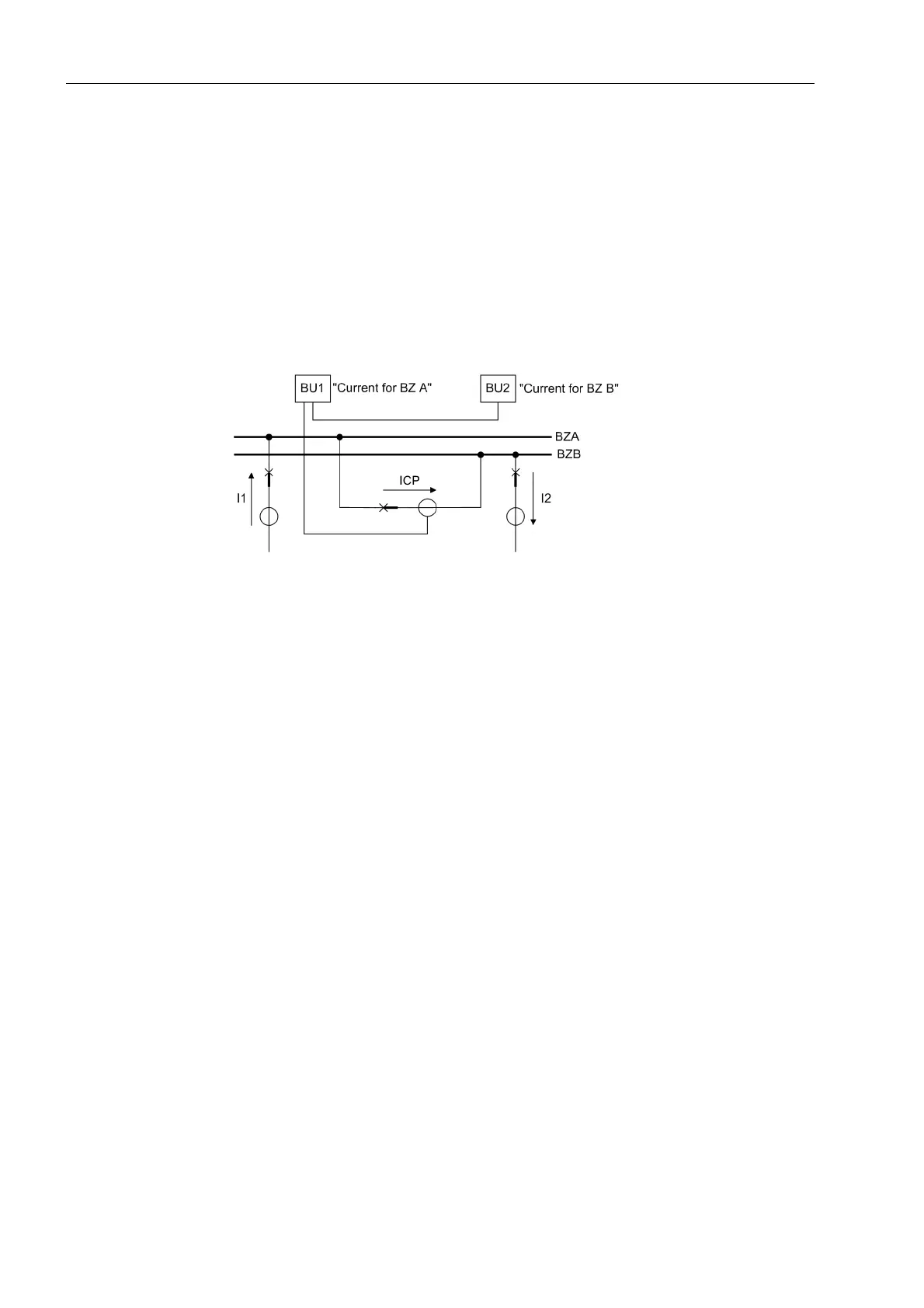